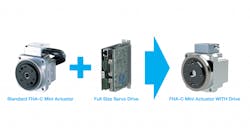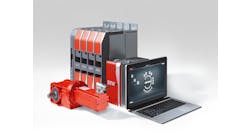Energy efficiency continues to be a top-of-mind topic driven by the focus and debate on renewable and alternate energy and the migration from “bad” sources of power such as coal and other greenhouse-gas-generating contributors—anything with a C-H chain. We engineers know this is shortsighted since not only are most products we use based on hydrocarbons, but the laws of physics dictate that the closer the source and final use of the energy are, the better.
Energy management, on the other hand, is the process of monitoring, controlling and conserving energy in a building or organization. A key part of management is conservation because energy conserved means it doesn't need to be generated. This is why energy-efficiency programs are essential for energy management. Automation has a role to play in energy management since you can only control what you can measure.
On the macro scale, instrumentation and controls are critical to how we manage conversion and transmission of energy on the large scales that make it economical and safe. At the micro level, wireless devices manage their energy with techniques such as turning themselves or their energy-intensive components off until needed. However, these devices, especially wireless sensors, are not energy-intensive. Final control elements, on the other hand, have a significant impact on energy use.
The definition of efficiency is “the ratio of useful work performed to the total energy taken in.” We also know that no process is 100% efficient, and every time we change energy from one form to another, it comes at a cost. Therefore, we wish to connect the most efficient energy sources we can, as close as we can, to the final use of the energy. Similarly, we want to minimize leakage or losses once we get the energy to its endpoint.
One of the best ways automation professionals can contribute to energy efficiency is with final control elements. Our input starts during the engineering phase when we select and size the valve. This is because energy recovery is a function of the type and location on the operating curve of the valve. An historical rule of thumb was to have 30% of pressure drop (energy) available in the line for control elements. Of if you looked at it the other way, the piping system had to be designed to “waste” 30% of the energy used to move the fluid from point A to point B.
This inherent inefficiency, combined with improvements in solid-state electronics, led to more control valves being replaced with variable-frequency drives (VFD) or variable-speed drives (VSD), especially for greenfield or debottleneck projects, because the pumps only need to provide the energy required to move the fluid.
Regardless of which option is used to control the process—valve or variable-drive motor—it's important to keep the process in tune to minimize the inefficiencies of operating the process at less than setpoint for longer than necessary.
Instrument air is another place to save energy. Air is lost through leaks, and a typical plant not maintained with regular ultrasonic surveys will have a leak rate of 10-30% of total compressed air capacity. According to the U.S. Dept. of Energy, 100 psig compressed air (a typical instrument air header pressure) ranges from 18-32 cents per 1,000 standard cubic feet (SCF) or 28.3 m3. Common sources of losses are couplings, hoses, tubes and fittings; open condensate traps and shut-off valves (abandoned or off-duty equipment improperly isolated); pipe joints, disconnects and thread sealants; and pressure regulators and control valve positioners/diaphragms. This last item is included because valve bleed is a form of continuous venting, and since we've shown that losses impact efficiency, consideration should be given to using bleed-less actuators.
Energy management and energy efficiency are key elements of the desired objective, and we automation professionals can do our part by doing what we do better than most: understand the full equation and act not only on the numerator (work required) but also on the denominator (energy supplied or inputs).
[sidebar id =1]



